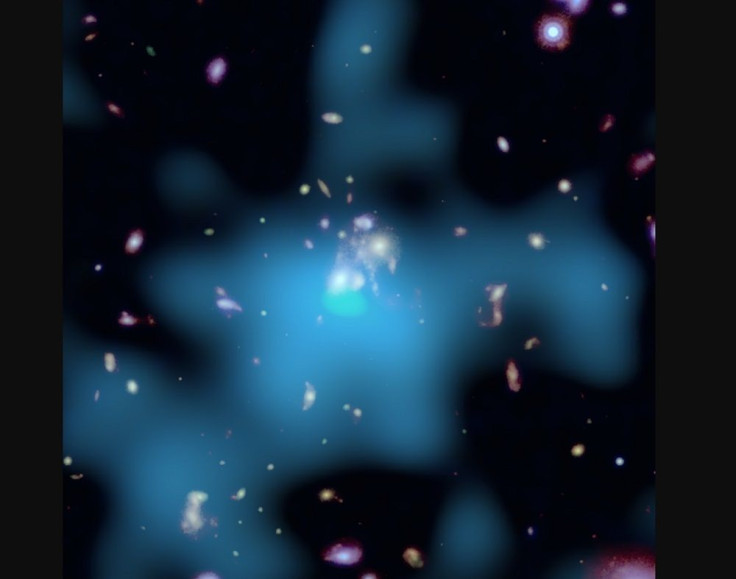Astronomers Find What Happens When A Black Hole Doesn't Do Its Job
KEY POINTS
- Galaxy cluster SpARCS1049 is forming stars at an extraordinary rate
- A new study finds that this may be due to a lack of interference from a black hole
- In most cases, activity from black holes prevent star formation, lowering the star formation rate
- Without black hole interference, SpARCS1049 gets to form a large number of stars
In a galaxy 9.9 billion light years away from the Earth, there is a galaxy cluster that is forming stars at a spectacular rate. Researchers found that the activity may be because its black hole is not doing its job.
It was in the previous observations of galaxy cluster SpARCS104922.6+564032.5 (SpARCS1049) using NASA's Hubble Space Telescope and Spitzer Space Telescope that astronomers found its extraordinary star-forming rate. The observations revealed that SpARCS1049 is actually forming stars over 300 times faster than the Milky Way.
It is forming stars so fast that if the Milky Way formed stars at the same rate, all of the stars in the galaxy would be formed in less than 100 million years - a much shorter amount of time compared to the Milky Way's age of over 10 billion years.
Using new data from the Chandra X-ray Observatory, the authors of a new study found that SpARCS1049 may owe its exceptionally active star formation rate to passive black hole behavior.

Based on the data, the researchers found that the temperature of the gas at most of the cluster was at 65 million degrees but was much cooler at the site of the intense star formation. The temperature of the gas in these areas was just about 10 million degrees.
In most cases, supermassive black holes at a cluster's central galaxy eject a material that prevents the intracluster gas from cooling and forming stars, thus reducing the star formation rate of the cluster. In the case of SpARCS1049, the astronomers did not detect signs that a supermassive black hole at the central galaxy is actively pulling in matter and influencing the cluster, allowing a large number of stars to be formed.
"Overall, these observations show the dramatic impact when supermassive black hole feedback fails to operate in clusters," the researchers wrote. "They indicate that in the highest overdensities such as clusters and proto-clusters, runaway cooling may be a new and important mechanism for fueling massive bursts of star formation in the early universe."
Simply put, the supermassive black hole at the central galaxy is essentially not doing its job of intervening with the galaxy cluster.
"It reminds me of the old expression of 'when the cat's away, the mice will play,'" study lead Julie Hlavacek-Larrondo of the University of Montreal said in a news release from NASA. "Here the cat, or black hole, is quiet and the mice, or stars, are very busy."
This might have something to do with the difference in the position of the densest gas and the central galaxy. If the supermassive black hole at the center of the central galaxy is being starved of fuel, it won't be able to produce the outbursts that ultimately influence the star formation in the galaxy cluster.
The researchers say it is possible that this difference in the position of the central galaxy and the densest gas may have been due to earlier collision between two galaxy clusters that eventually formed SpARCS1049. It is possible that during this collision, the central galaxy moved away from the densest gas, eventually starving the supermassive black hole of fuel.
"Many astronomers have thought that without the intervention from a black hole, the formation of stars would run out of control," study co-author and the person who first discovered SpARCS1049 in 2015, Tracy Webb of McGill University, said in the NASA news release. "Now we have observational proof that this is indeed what takes place."
The study is published in The Astrophysical Journal Letters.
© Copyright IBTimes 2024. All rights reserved.






















